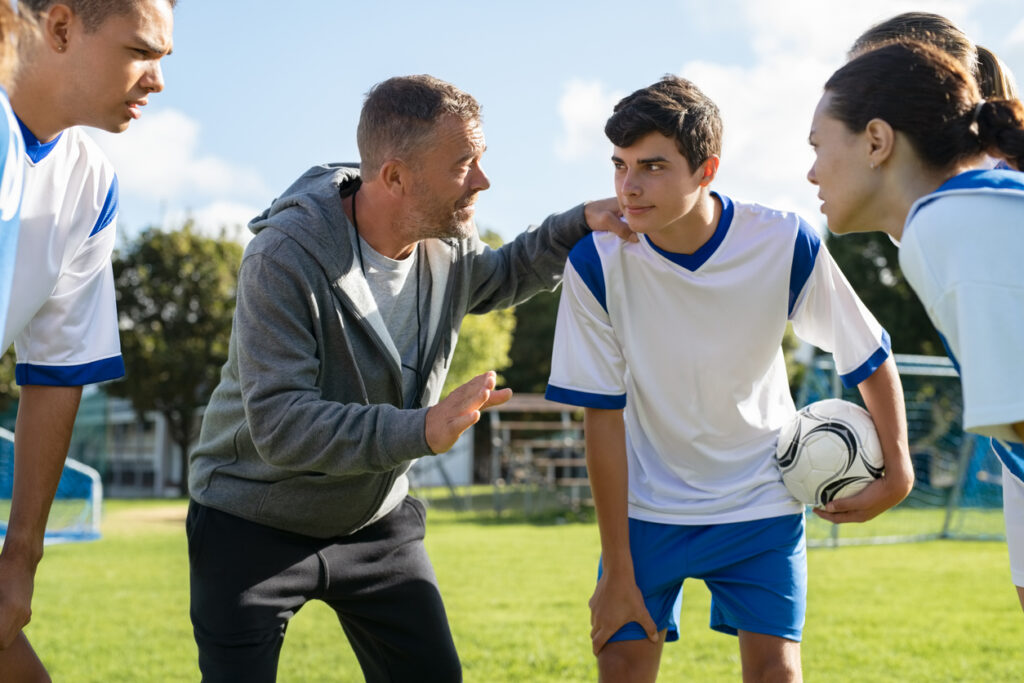If you follow the news online, in print, or on television, you know that over the past two years, teen mental health has become a common topic across all these platforms. Most of us notice them more, now, because of the well-documented negative effect of the coronavirus pandemic on teen mental health in the U.S. and around the world. However, articles about the precarious state of teen mental health in the U.S, we common before the pandemic arrived in 2020. Most of those articles reported on the increase in prevalence of several mental health disorders among teens over the past ten years and focused on the most disturbing development related to teen mental health and well-being in recent memory: the shocking and dramatic increase in teen suicide.
Here’s a summary of the facts and figures published by the Centers for Disease Control (CDC) that alarmed public health officials before the pandemic began. These statistics compare various aspects of teen mental health – specifically teens in high school – over a ten-year period.
Teen Mental Health in the U.S.: 2009-2019
- Felt persistently sad or hopeless:
- 2009: 26.2%
- 2019: 36.7%
- Seriously considered suicide:
- 2009: 13.8%
- 2019: 18.8%
- Made a suicide plan:
- 2009: 10.9%
- 2019: 15.7%
- Attempted suicide:
- 2009: 6.3%
- 2019: 8.9%
- Injured in suicide attempt:
- 2009: 1.9%
- 2019: 2.5%
Data from 2021 – including an advisory published by the Surgeon General of the United States – show that pandemic exacerbated the problems that were already developing. In the year 2021:
- General mental health among teens deteriorated:
- 44% reported feeling sad/hopeless
- 37% reported poor mental health
- Anxiety and depression symptoms among teens doubled
- 20% reported depression
- 25% reported anxiety
Those statistics are what make a recent study we discovered important. It examines the effect of team sports on teen mental health. If team sports improve teen mental health, that’s a piece of the puzzle parents, teachers, or anyone involved in the life of a teen can use to help that teen grow, thrive, and become the best possible version of themselves.
Team Sports in High School and Teen Mental Health: What’s the Connection?
Published in June 2022, the study we’ll discuss is called “Associations Between Organized Sport Participation and Mental Health Difficulties: Data From Over 11,000 US Children and Adolescents.” The title itself goes a long way toward explain the study. Here’s how the study authors describe the goal of the research:
“The purpose of this study was to explore the association between participation in organized sport and a broad array of mental health difficulties among US children and adolescents.”
We’ll talk about how the researchers obtained data form over 11,000 teens in a moment. First, we’ll review specific details about the study design. To determine level of participation in organized sports, researchers separated teens into four groups:
- Team sport participant
- Individual sport participant
- Team and individual sport participant
- Non-participant in team of individual sports
To determine the mental health status of the teens in the study, parents completed the Child Behavior Checklist (CBCL), which is a standardized tool used worldwide to assess the mental health of children and teens as viewed by their parents. The CBLC contains questions about:
- Anxiety
- Depression
- Physical complaints
- Social problems
- Cognitive problems
- Attentional problems
- Aggression
- Conduct/behavioral problems
Teens and parents responded to the sports participation questions with simple yes/no answers, while parents answered CBCL questions on a continuum to determine the frequency, severity, and level of disruption caused by the various domains examined in the study.
We’ll share results in a moment.
Now, as promised, we’ll answer the question we pose above: how did the researchers get access to information on over 11,000 teenagers?
The ABCD Study: A Landmark Research Effort
In 2013, a group of federal agencies formed the Collaborative Research on Addiction at National Institutes of Health (CRAN). The lead scientists and researchers identified the primary goal of the research effort at the beginning of the process:
“CRAN’s initial goal was to learn as much as possible about individuals before they start using substances, then follow them through the period of highest risk.”
The scientists soon realized that “substance use is only on part of the larger picture of adolescent development.” To expand the scope of their study and increase its relevance to a greater number of teens and families, they invited additional federal agencies to participate in the study, including the National Institutes on:
- Alcohol Abuse and Alcoholism (NIAA)
- Drug Abuse (NIDA)
- Cancer (NCI)
- Child Health and Human Development (NICHD)
- Mental Health (NIMH)
- Neurological Disorders and Stroke (NINDS)
- Minority Health and Health Disparities (NIMHD)
By 2015, this impressive collection of institutes and agencies reorganized the project under a new name, The Adolescent Brain and Cognitive Development Study, a.k.a. The ABCD Study. The ABCD study is in the process of tracking the development of 11,750 children over ten years, from age 9/10 to age 19/20. The expanded scope – and additional infusion of close to 300 million dollars of funding in 2021 – allows the researchers to examine the effect of the following experiences on the adolescent brain:
- Alcohol use
- Tobacco use
- Marijuana use
- Screen exposure
- Sleep time
- Participation in arts
- Participation in sports
In addition, the researchers collect data on blood cardiovascular health, cholesterol, and hormone function. One thing they hope to achieve, with the use of modern brain imaging technology, is to “…create of baseline standards for normal brain development, similar to those that currently exist for height, weight, and other physical characteristics.”
What began as an effort to understand the effect of addiction on the adolescent brain transformed into a major research initiative to that will add valuable knowledge and insight to almost every aspect of adolescent development, including physical, social, emotional, and cognitive domains.
That’s how researchers obtained the data. They used information from the initial stages of the ABCD Study.
Let’s look at their data.
Team Sports and Teen Mental Health
As we mention above, the researchers focused on the dataset involving “participation in sports.” Most parents know and understand the benefits of team sports. The most commonly recognized benefits include, among other things:
- Improved physical health
- Improved self-esteem
- Enhanced feelings of social connection
- Firsthand experience of teamwork
That’s a very short list, which we share to establish the idea that most parents recognize the value of team sports in general. They keep teens healthy, keep them connected to school and peers, and teach them how to work with others. What most parents don’t know is whether team sports can help teen mental health. Based on the data we shared in the introduction to this article, this is something parents need to know.
Here’s the data.
Participation in team sports compared to non-participation was associated with:
- 10% lower scores for anxiety and depression
- 19% lower scores for depression/withdrawal from activities and peers
- 17% lower scores on questions about social problems
- 17% lower scores on questions about thought/cognition
- 12% lower scores on questions related to attentional issues
Participation in team sports compared to non-participation was also associated with:
- 20% lower scores questions assessing rule-breaking behavior scores
- This reduction was only associated with females
In a surprise series of findings, participation in individual sports, when compared to no participation in sports at all, was associated with:
- 16% higher scores for anxiety and depression
- 14% higher scores for depression/withdrawal from activities and peers
- 12% higher scores on questions about social problems
- 14% higher scores on questions related to attentional issues
Finally, compared to no participation in any sports at all, participation in both team and individual sports was associated with:
- 17% lower scores questions assessing rule-breaking behavior
- This reduction was only associated with females
Let’s discuss these results.
How This Information Helps Parents
First, let’s highlight the primary finding: teens who participate in team sports reported lower scores on key mental health and behavioral metrics, including those related to anxiety, depression, attention, cognition, and social functioning.
That’s good information for parents to have. It means team sports have a positive impact teen mental, social, and emotional health. Here are the team sports identified in the study: soccer, baseball, basketball, field hockey, football, ice hockey, lacrosse, rugby, and volleyball. Participation in those sports was associated with lower scores on mental health and social metrics, compared to non-participation.
Now let’s look at the finding that’s surprising: individual sports were associated with higher scores on mental health metrics, including those associated with depression, withdrawal from friends, anxiety, social problems, and attentional issues. Here are the individual sports identified in the study: ballet/dance, gymnastics, horseback riding, martial arts, wrestling, swimming, tennis, track/running/cross country.
That’s important information to know. It also runs contrary to previous studies that show participation in individual sports, compared to non-participation, is associated with:
- Reduced social phobia
- Reduced panic attacks
- Fewer symptoms of hyperactivity/inattention
- Improved impulse control
That begs the question: are individual sports good or bad for teens?
The answer: it depends on the teen.
Keep Perspective, Pay Attention
When we read conflicting data like that, we view it with a sense of perspective. It teaches us to keep an open mind about what we know, what we think we know, and what we have yet to learn. For parents of teens who participate in the individual sports listed above, this data suggests they should keep a close on those teens for signs of emotional problems, such as anxiety and depression, and social problems, such as withdrawal from peers and friends.
That’s also true for all teens in the year 2022. All the data shows our teens are at risk of mental health issues. Therefore, we encourage all parents to keep a close on their teens for any sign of emotional or psychological distress, and we encourage parents who see any warning signs to seek professional support as soon as possible.
We’ll close this article by suggesting that any parent interested in learning more about the effect of sports and exercise on teen mental health read the following articles in the Parenting Tips and Advice section of our website:
Team Sports, Adverse Childhood Experiences, and Mental Health
Life-Long Sports in Schools and Homes
Finding Help: Resources
If you’re seeking treatment for your teen, please navigate to our page How to Find the Best Treatment Programs for Teens and download our helpful handbook, A Parent’s Guide to Mental Health Treatment for Teens.
In addition, the American Academy of Child and Adolescent Psychiatry (AACAP) is an excellent resource for locating licensed and qualified psychiatrists, therapists, and counselors in your area. Both the National Institute of Mental Health (NIMH) and the National Alliance on Mental Illness also provide and high-quality online resources, ready and waiting for you right now.































































